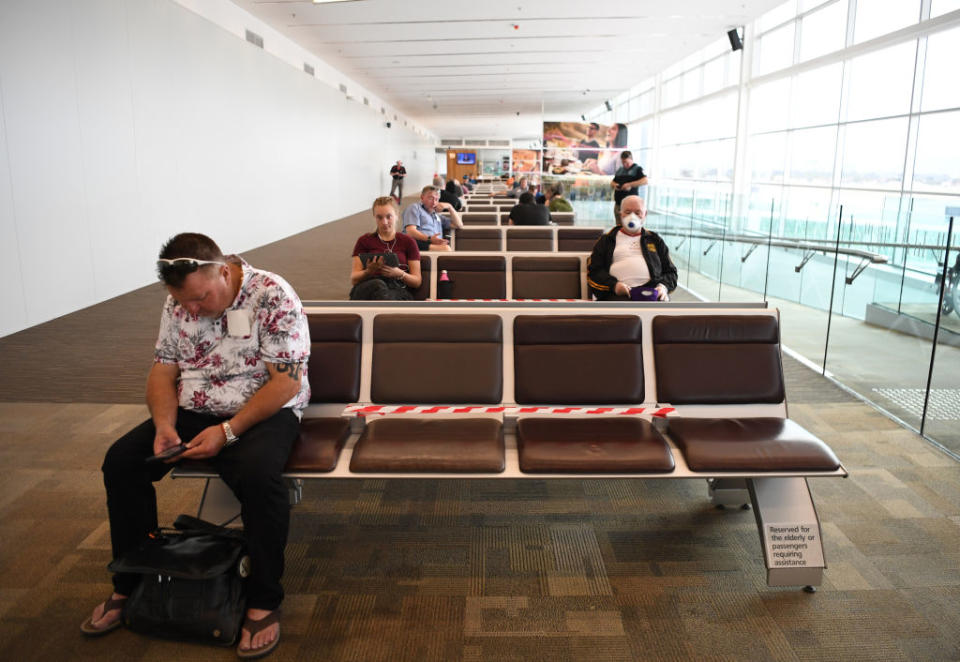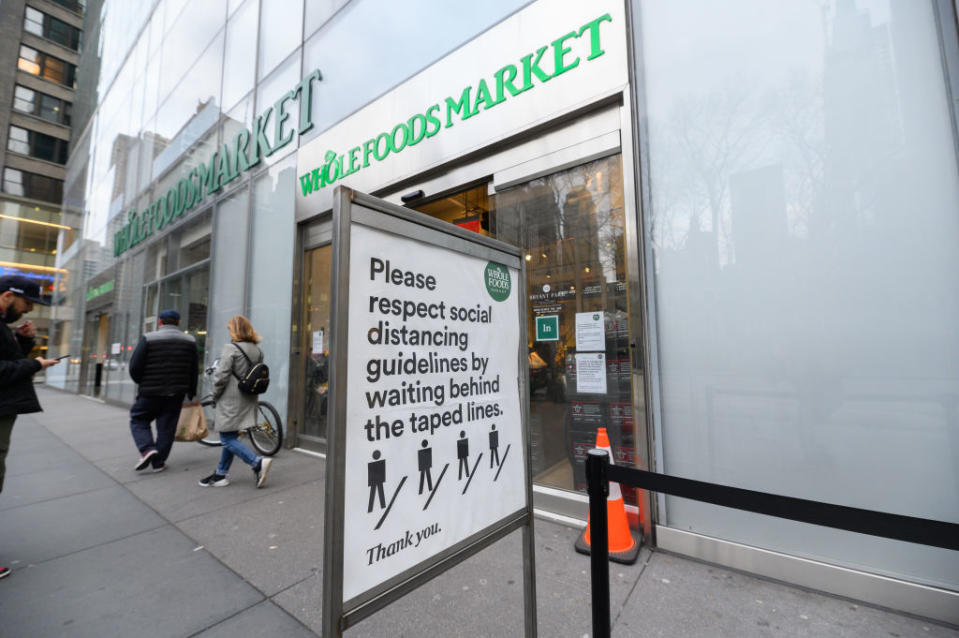Coronavirus: Is 1.5 metres enough space for social distancing?
For the past two weeks, Australians have been urged to keep a 1.5 metre distance between themselves and others in a bid to curb the coronavirus crisis.
The social distancing rule was introduced by government leaders after it was revealed the deadly virus is highly infectious and can be transmitted through direct exposure to an ill person’s droplets when they sneeze or cough.

While Australians are required to keep 1.5 metres apart, health officials in other countries have ordered residents to maintain a 1.8 metre (six foot) distance.
With the help of experts, Yahoo News Australia has broken down if 1.5 metres is enough space to keep you safe.
COVID-19: 6 charts and maps that explain how coronavirus is spreading around the world
Is 1.5m enough when sneezing and coughing?
Some studies have attempted to determine the exact distance droplets from a sneeze travel, but they are often lab-based and “not so easy to translate into real life settings,” Dr Catherine Bennett, chair in epidemiology at Deakin University, told Yahoo News Australia.
“There is some evidence in the hospital setting that suggests anything less than 1.8m puts those exposed at greater risk, but this is a very different setting to being out in the community.”
The distance should be enough to deter transfer coronavirus from one person to another if people cover their mouth and nose when they sneeze or cough and stay at home if they feel ill, Dr Bennett said.
“You would need to be passing or right near someone someone just as they sneezed or coughed to be at risk,” she said.

“The risk if direct exposure also depends on whether it’s windy or what direction you are both facing etc. All this highlights how important covering the mouth and nose is when someone feels a sneeze or cough coming on and how essential it is for those people with symptoms to stay out of public places altogether.
“If everyone does this, then 1.5m should be safe enough!” she said.
What about contaminated surfaces?
Surfaces with traces of the virus are a big concern, Dr Bennet said, but good hygiene such as frequently washing your hands will do more to reduce the risk of infection than increasing the space allowed between people.

The US Centers for Disease Control and Prevention says it “may be possible a person can get [the virus] by touching a surface or object that has the virus on it and then touching their own mouth, nose, or possibly their eyes”.
This basically means that droplets from an infected person can land on doorknobs, elevator buttons, handrails or countertops and then spread the virus to anyone who then touches these surfaces, doesn’t wash their hands and goes on to touch their face.
To learn more about how long coronavirus can live on surfaces, scientists from the National Institutes of Health in the US used a nebuliser device to expel the virus into the air, mimicking a cough or sneeze.
The results suggest the “viable” COVID-19 virus could be detected up to three hours later in the air, up to four hours on copper, up to 24 hours on cardboard, and up to three days on plastic and stainless steel.
Why are US, UK and European residents being told other distances?
The UK’s National Health Service has told residents with coronavirus symptoms to keep two metres away from other people, while the Centres for Disease Control and Prevention said Americans should “put a distance between yourself and other people if COVID-19 is spreading in your community”.
The World Health Organisation says people should leave a 1 metre space between each other.
Associate Professor Philip Russo with Monash University said in an article for The Conversation 1.5 metres is “not a precise measurement, nor is it absolutely guaranteed to prevent spread.”
While there is no consistent distance measurement across countries, an “approximate distance is better than no distance,” he said.
“Right now, avoiding close contact with others is important, and keeping 1.5 metres away from each other is not an exact science.
“It’s about keeping some sensible and practical distance between you and others.”
Do you have a story tip? Email: newsroomau@yahoonews.com.
You can also follow us on Facebook, Instagram and Twitter and download the Yahoo News app from the App Store or Google Play.





